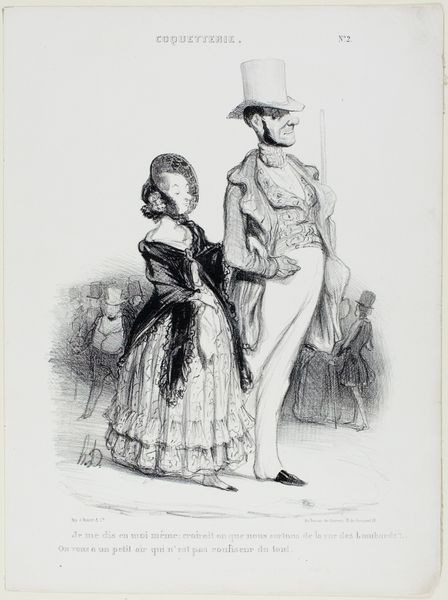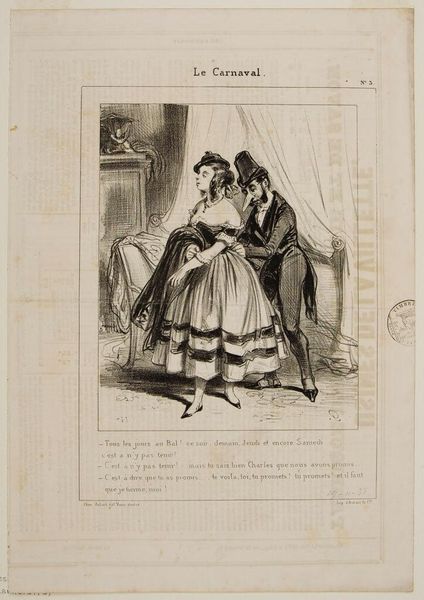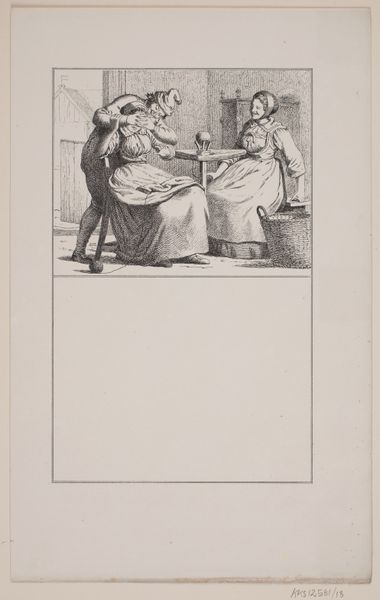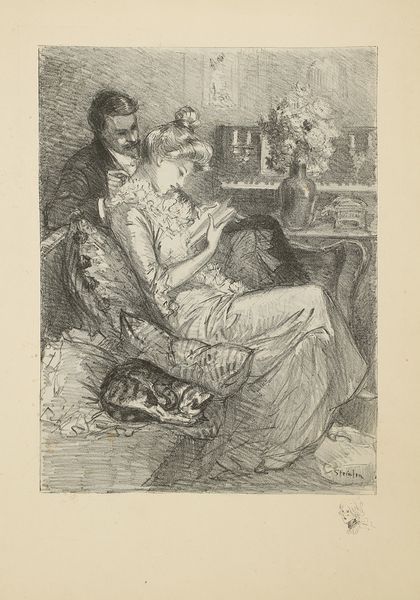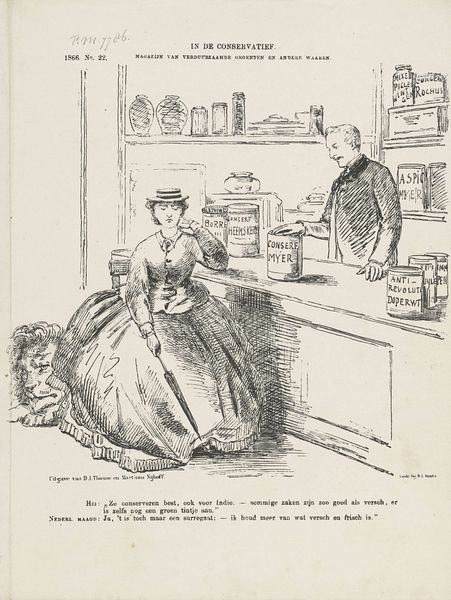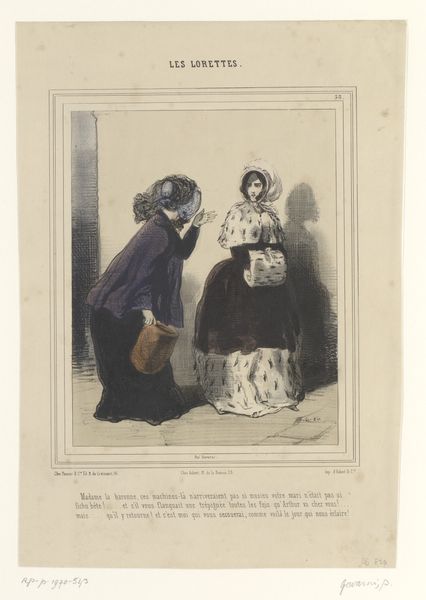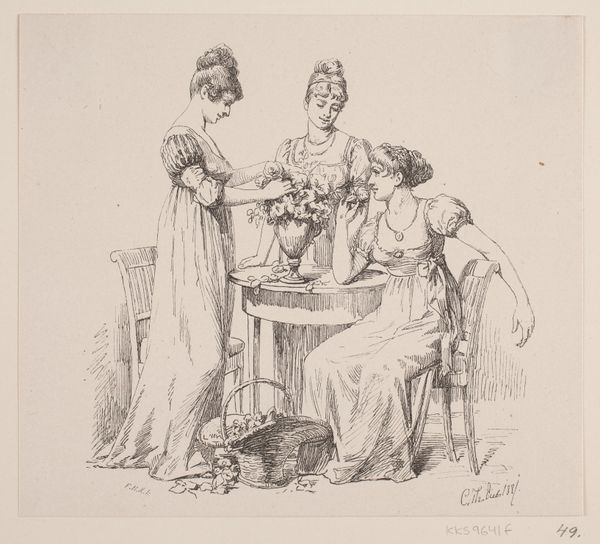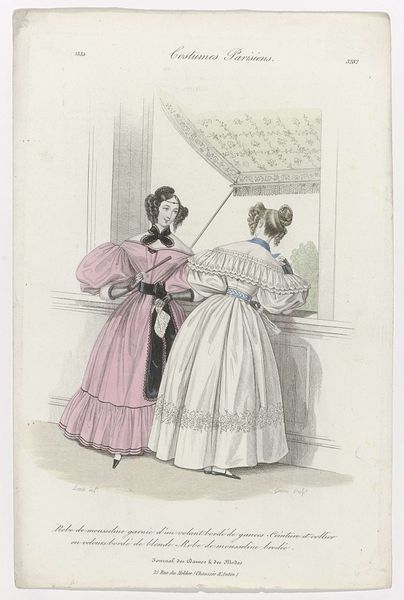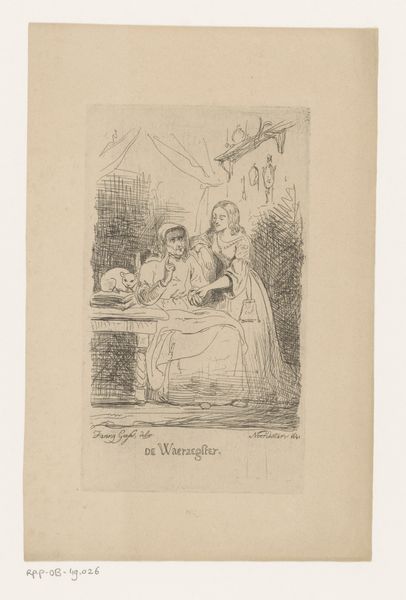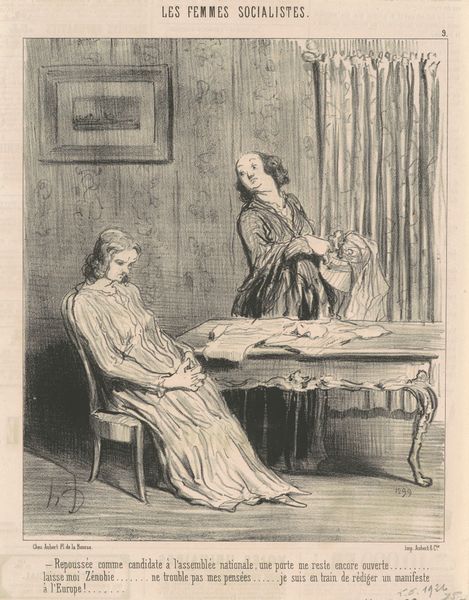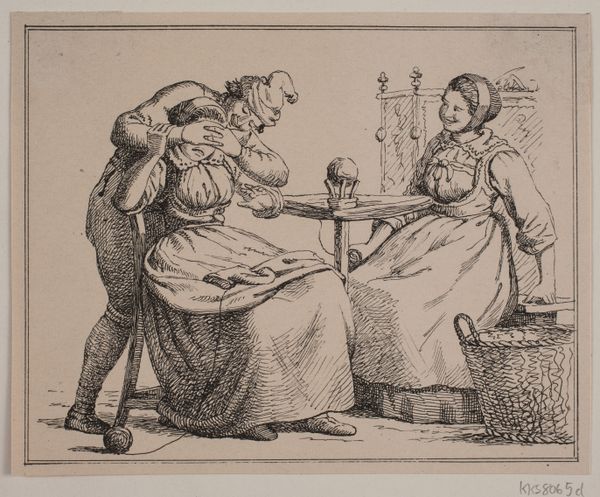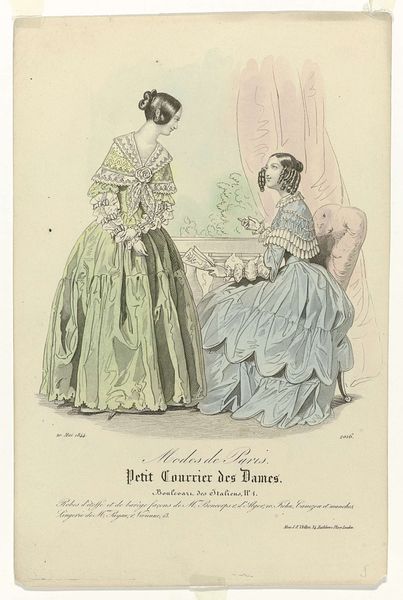
Spotprent op de onenigheid tussen Thorbecke en Fransen van de Putte, 1866 1866
0:00
0:00
drawing, ink, pen
#
drawing
#
caricature
#
ink
#
pen
#
genre-painting
#
history-painting
#
modernism
#
realism
Dimensions: height 275 mm, width 215 mm
Copyright: Rijks Museum: Open Domain
Curator: Looking at this image, it feels like we're stumbling upon a secret moment, doesn't it? All delicate lines and hushed tones, rendered with just pen and ink. Editor: Indeed. This is a political cartoon, a drawing made in 1866, titled "Spotprent op de onenigheid tussen Thorbecke en Fransen van de Putte," which translates to “Caricature of the discord between Thorbecke and Fransen van de Putte.” Curator: Caricature is putting it mildly! Look at the woman’s formidable dress, and the merchant's weaselly grin. There's a real sharpness there that feels surprisingly modern. A far cry from frilly sentimentality. I can feel her reluctance. Editor: It reflects the political turmoil of the time, doesn't it? Johan Michaël Schmidt Crans subtly critiques the conflict between Thorbecke and Fransen van de Putte by representing them as fragile figurines on display, sold, haggled over...The tension seems embedded in that contrast. The artist captures the instability of power by presenting the political figures of the moment as trivial consumer objects. Curator: Ah, but there's more! Do you see that the figures are set up as if in a shop and are being offered by the shopkeeper as cabinet figures to the woman? She says that she would rather have "a set that is better harmonized." It seems to cut at a deep, personal level; the cartoon lays bare the personal vanities and fractured alliances that underscore political discord. Editor: And the use of realism here lends it that biting edge; the detailed rendering makes the satire all the more potent, especially within the context of rising modernism. The rigid realism contrasts with the fluidity of pen and ink; that's the magic of the satirical genre at its finest. Curator: Absolutely. And that slightly mournful air around it…perhaps a knowing wink from the artist? As if to say, 'Plus ça change…' Editor: It is that air that carries the charge from 1866 through to today. Art not only holds a mirror to society but provokes us to dissect it, challenging how we interpret power dynamics and engage in dialogue. Curator: You're right, and it does it with a dash of wit that transcends time, I love that the final word is on this political elite as something inharmonious. Editor: Precisely, reminding us that visual culture provides vital means through which politics are communicated and engaged.
Comments
No comments
Be the first to comment and join the conversation on the ultimate creative platform.
